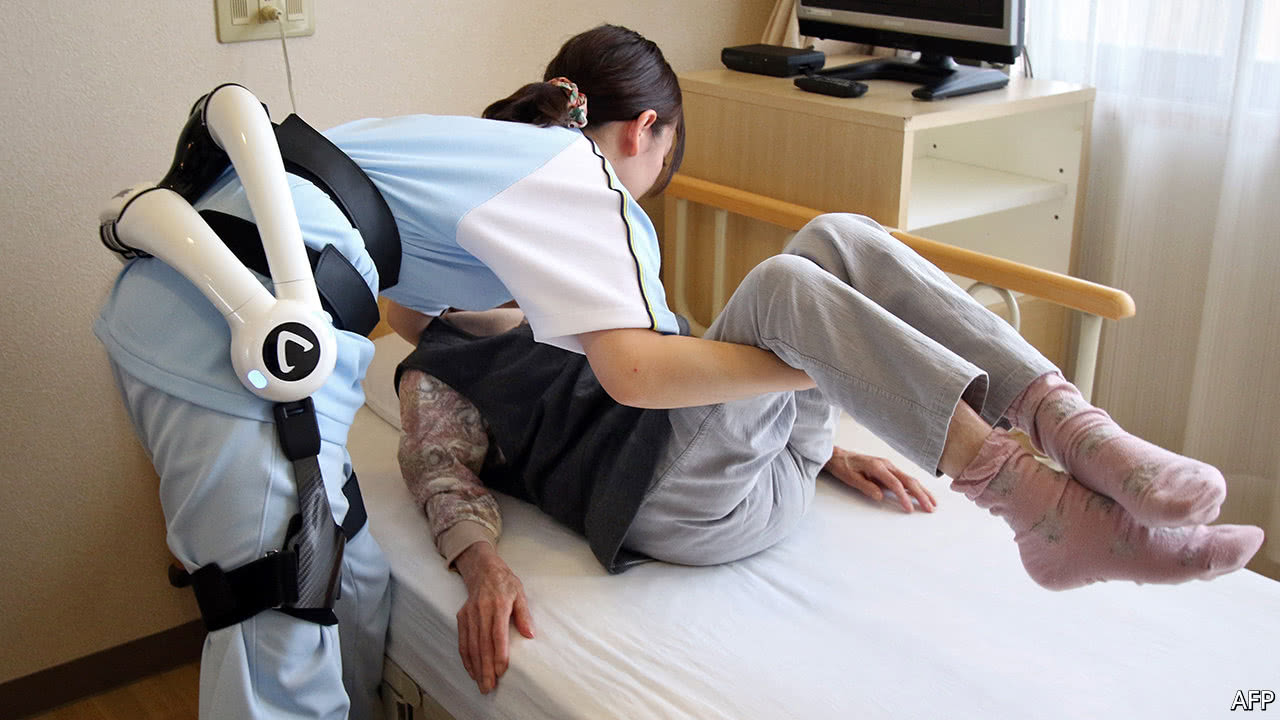
AT SHINTOMI nursing home in Tokyo, men and women sit in a circle following exercise instructions before singing along to a famous children’s song, “Yuyake Koyake” (“The Glowing Sunset”). They shout out and clap enthusiastically even though the activities are being led, not by a human fitness guru, but by Pepper, a big-eyed humanoid robot made by SoftBank, a telecoms and internet giant.
Japan leads the world in advanced robotics. Many of its firms see great potential in “carerobos” that look after the elderly. Over a quarter of the population is over 65, the highest proportion of any country in the OECD. Care workers are in desperately short supply, and many Japanese have a cultural affinity with robots.
-
Doctors have a rosier view of male than of female surgeons
-
What is sexual harassment and how prevalent is it?
-
The incredible inventiveness of Hedy Lamarr
-
Measuring the effects of partisanship on pie-eating
-
Retail sales, producer prices, wages and exchange rates
-
Why Test cricket is struggling
For now the market is small. Although the government expects it will more than triple between 2015 and 2020, to ¥54.3bn ($480m), that is a long way below the revenues from industrial and service robots. One big reason for that is expense; few individuals can afford their own robots. Private firms partly rely on government subsidies to develop them; the main customers are nursing homes, which also receive subsidies. Some 5,000 nursing-care institutions are now testing robots.
Yoshiyuki Sankai, founder of Cyberdyne, a robotics firm that makes some of the most expensive gear, is undeterred. “When Steve Jobs invented the personal computer there wasn’t a market for it,” he says. He has managed to persuade private health-insurance firms such as AIG to help cover the cost of some of his products.
At Shintomi and elsewhere, much of the equipment helps workers lift, move and monitor residents. A bed from Panasonic, a maker of appliances, splits in two, with one half turning into a wheelchair. Cyberdyne’s lumbar-support suit responds to bioelectric signals from the wearer’s body and helps care-home staff as they bend and lift. Sensors above beds alert workers when a patient moves near the edge and is in danger of falling out. At some homes, excretion sensors on the body monitor intestinal movements to predict when someone needs the lavatory.
Robots that communicate and provide companionship are among the most popular at the Shintomi home. Paro, a baby harp seal made by Intelligent System, a Japanese manufacturer, responds to touch and sound, turning to and nuzzling patients who stroke or talk to it. Sony’s Aibo, a robo-dog originally invented as a gizmo for those who had it all during Japan’s bubble years, has become another pet for the old.
Multi-purpose robots such as Pepper seem especially promising. In other businesses, Pepper specialises in customer service. But in nursing homes it talks to patients and monitors corridors at night (as well as running exercise classes).
Robot technology has much further to go if the machines are to replace human carers. “That will not happen until they have sontaku,” says Yukari Sekiguchi, Shintomi’s manager, referring to the Japanese concept of understanding by implication. “It cannot tell from a glance that someone fancies a cup of tea. I can.” Human social interaction is still much easier to solve using robots than manual tasks are, says Kenichi Yoshida, who runs SoftBank’s robotics division. For now, only humans can do tasks such as brushing a patient’s teeth or shaving them.
Even so, many residents at Shintomi are keener on the robots than they are on some of the care workers, notes Mr Sekiguchi. A recent nationwide study found that using robots encouraged over a third of residents to become more active and autonomous. The earliest adopters of robotics may well be people in the later stages of life.
Source: economist
Japan is embracing nursing-care robots